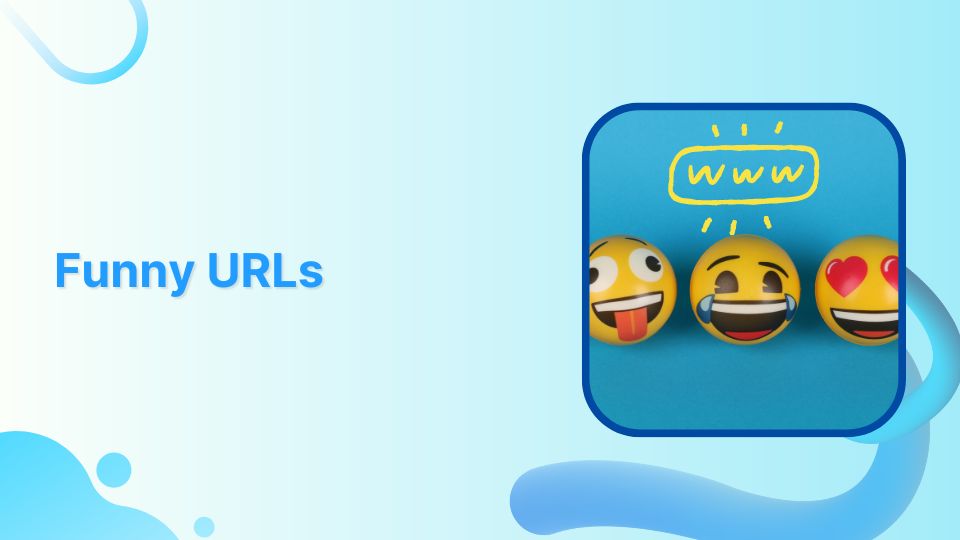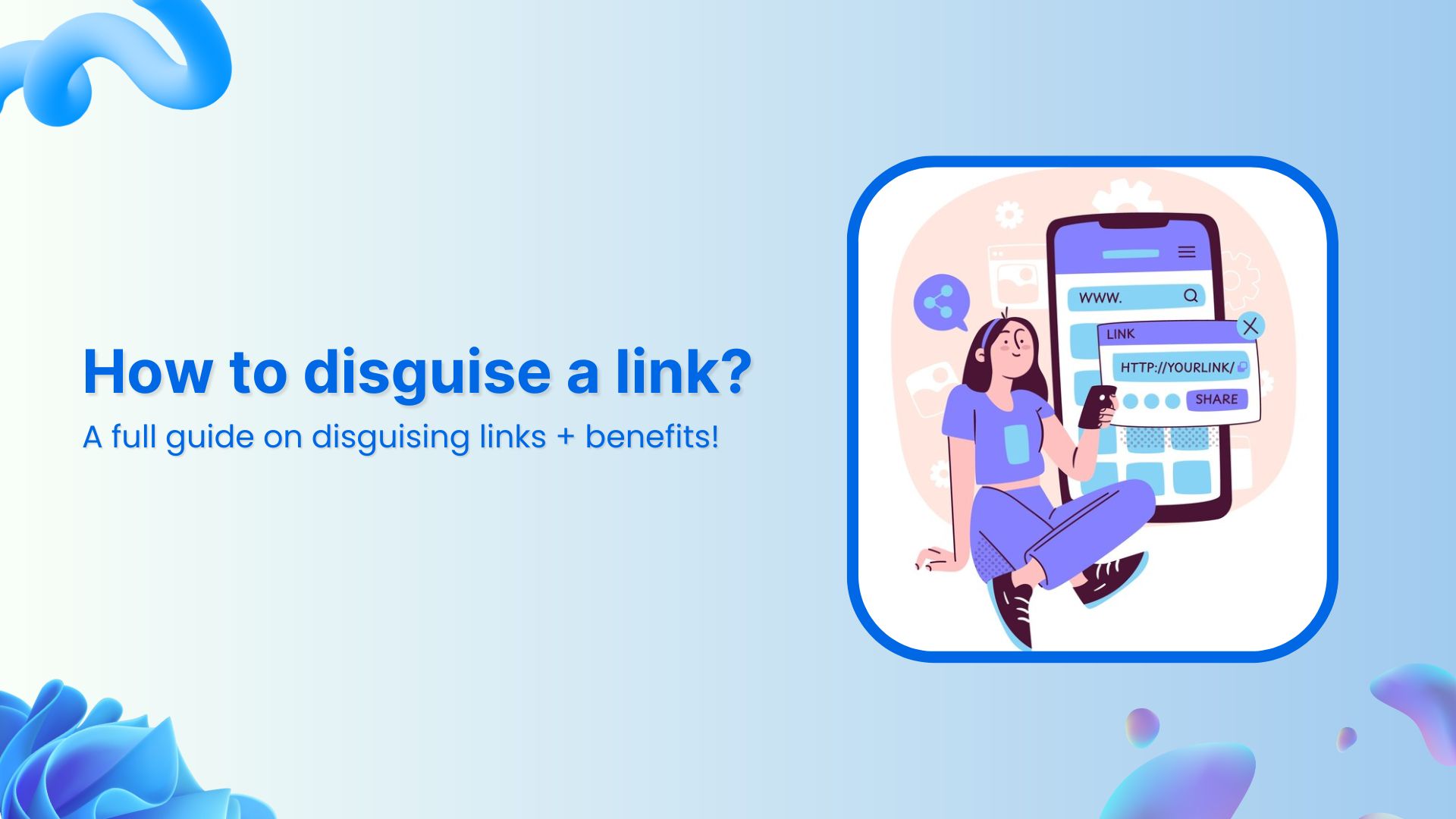This funny URL blog will be a dose of laughter for you.
Whether it’s a playful pun or a clever combination, these are for sure humorous web addresses.
Maybe these silly mistakes were realized later, but these domain names will make you think twice before creating your own.
Everyone wants a branded, keyword rich and pronounceable domain for their business or blog.
However, sometimes people make blunders despite grabbing a nice domain name, and end up making clumsy URL errors.
Funny URL and domain name blunders
We have collected some hilarious website names that will tickle your funny bone. Let’s get on with our funny url list.
1) Childrenswear
Childrenswear registered their domain name as its company registered name. Now look how people are viewing it.
Instead of seeing ‘Children’s Wear’, we see ‘Children Swear’.
We need to avoid such names, which can bring negative publicity to the brand and evades potential customers.
Speaking of children swearing, enjoy the video below:
Interesting read: What is a Vanity URL and Why You Need One?
2) Itscrap
You read it right “Its Crap” !
Though it’s not “its-Crap” instead it’s,“IT-Scrap”.
A blunder that they quickly realized and redirected their website to a new name. i.e. regency technologies.
3) Hireatease
This is an Indian IT recruitment company. I ain’t joking around, you can check by clicking the link yourself.
It is not at all “Hire a Tease”, actually it is “Hire at Ease”.
That’s what happens when you dont learn grammar and the importance of punctuations.
Interesting read: What Does HTTP 302 Code Means?
4) Speedofart
This domain name is a work of Fart!
Because one can’t guess whether it’s “Speedo-Fart” or “Speed of art”
There’s always some naughty office colleague. And I have too many of them ????. When i received this link i was too skeptical to click on the link.
But then again, i had to find out so i clicked on this link hoping something to be else.
Thank God! I was relieved to find out its just a silly domain name mistake. That how it made the list.
But this is another example of how wordplay can get you.
5) Oldmanshaven
Old Man Shaven… Yikes!
Old Man’s Haven is a website for cabin rentals, not a barber shop or whatever you are thinking ????.
6) Wintersexpress
The mistake is quite evident here.
Winters is a city in California, USA. Winters Express is a news media website of the city to keep residents updated with the latest news, opinions and other happenings in the city. It’s not about winter sex press news and media reports.
Interesting read: Online Branding with Branded Short Links
7) Viagrafix
Another funny url example, a mistake which the owners realized and redirected their visitors from viagra-fix.net to a new domain name. i.e.https://www.fullnet.net/
They must have got many emails at the customer’s support end for ED support. ???? ????
The name change makes it even more funnier, as the new domain name has the word “Net” twice in it.
8) Fagray
It’s definitely not “fag-ray” (ROFL), it’s Fa Gray, a full-service painting contractors website. It’s providing services since the early 1990’s.
9) Ihavegas
The person that owns this domain name surely was out of gas or had gas while buying this domain name. The domain is up for sale now for obvious reasons ????.
10) Poolife
Either it’s negative marketing or a mistake, as the website is not about Poo Life.
The funny URL address takes users to Pool Life, a brand selling pool maintenance and pool care products.
Now let’s talk about some of the worst domain names.
These domain names should be in a wall of shame with silly wordplay that will confuse when you will share your business link on socials or with your customers.
- For downers club or Ford owners club
- Bi gals curb side or Big Als curb side
- Holland shit festival or is it Holland’s hit festival?
Are you a victim of a funny URL error?
Well, it’s your mistake, worry not!
We can all make silly errors, so we also got the solution for your URL letters problem.
If you mistakenly chosen a wrong domain name and it’s affecting your business, then it’s time to get a new domain name.
While changing a domain name can be challenging, taking these steps can help mitigate the impact of a wrong domain choice and ensure a smoother transition to a more suitable domain for your business.
Step 1: Register a New Domain:
If feasible, register a new domain name that aligns better with your brand, business, and target audience. Choose a domain that is memorable, easy to spell, and reflects your core offerings.
Step 2: Redirect the Old Domain:
Set up a redirect from the wrong domain to the new one. This ensures that visitors who type in the old domain or click on old links are automatically redirected to your new domain, minimizing any potential loss of traffic or customer confusion.
Related: Fix “ERR_TOO_MANY_REDIRECTS” Error
Step 3: Communicate the Change
Update your website, marketing materials, and online listings to reflect the new domain name. Inform customers, clients, and stakeholders about the change through email newsletters, social media posts, and other relevant channels to ensure a smooth transition.
Step 4: Update Online Presence
Update your email addresses, social media profiles, and any other online platforms associated with the old domain. Ensure consistency across all your digital channels to avoid confusion among your audience.
What to do if you mistakenly created a wrong slug?
Method 1: Set up Redirection
First, it’s important to determine the type of redirect you want to implement.
One method to set up a redirection is by using a URL shortener.
Here’s how it works:
Link shorteners let you customize your slugs of your links with your brand name or a relevant keyword.
Further, use of a URL shortening service allows you to generate a short and catchy URL that redirects to your main domain. Such URLs are easier to share, visually appealing and encourage click-throughs.
Related read: How to Redirect a URL in WordPress – Ultimate Guide
Other methods to set up redirects:
- Server-side redirects (using .htaccess or server configuration)
- CMS plugins (WordPress, Joomla, Drupal, etc.)
- Website builder or hosting platform features
- JavaScript redirects
- Meta refresh redirects
- PHP header redirects
- Redirect plugins or modules for specific platforms (Magento, Shopify, etc.)
- API-based redirects (using programming languages like Python or Ruby)
- DNS-level redirects
- Reverse proxy redirects
Note: Redirects are valuable for preserving SEO value, maintaining user experience, and managing website changes.
However, avoid excessive redirect chains, which can negatively impact performance and user satisfaction.
Method 2: Disavow the wrong URL
To disavow a wrong URL, typically referring to that page, you wish to remove from your site or you no longer associate with, follow these steps:
- Identify the Wrong URL:
- Determine the specific URL or URLs that you want to disavow. This could be a page on your own website or an external website linking to your site.
- Contact Website Owners (if applicable):
- If the wrong URL is hosted on another website, reach out to the website owner or administrator. Request the removal or correction of the link pointing to your site.
- Create a Disavow File:
- Create a text file (.txt) using a plain text editor like Notepad. List the URLs you want to disavow, with one URL per line. Include both the domain and the specific URL, if necessary.
- Format the Disavow File: Use the following format for each URL:
- To disavow a specific page: disavow: http://www.example.com/wrong-page.html
- To disavow an entire domain: domain:example.com
- Submit the Disavow File:
- Log in to Google Search Console (formerly known as Google Webmaster Tools) and navigate to the Disavow Links tool. Select your website, click on “Disavow Links,” and upload the disavow file you created. Follow the on-screen instructions to complete the submission.
- Monitor and Assess:
- After submitting the disavow file, monitor your website’s performance and search rankings. It may take some time for search engines to process the disavow request and adjust the way they treat the links. Keep an eye on any changes and assess the impact of the disavowal on your website’s visibility.
Note: Remember, disavowing links should be used cautiously and as a last resort. It’s recommended to first attempt to have the wrong URLs removed or corrected by contacting the website owners directly.
8 Mistakes to Avoid When Choosing A Domain Name
When selecting a domain name, it’s essential to be mindful of grammar mistakes that can adversely impact your online presence. Here are some common errors to avoid:
- Lengthy URLs:
- Opt for concise and easy-to-remember URLs. Long URLs are prone to typos and can be challenging for users to type accurately.
- Irrelevant Keywords:
- Ensure that your URL reflects the content or purpose of your website. Irrelevant keywords can mislead users and negatively impact search engine optimization.
- Inconsistent Branding:
- Maintain brand consistency between your URL and your brand. Using a URL that deviates significantly from your brand can confuse users and weaken your online identity.
- Misspelling:
- Double-check for any misspelled words in your domain name, as it can confuse visitors and make it harder for them to find your website.
- Improper word usage:
- Ensure that you’re using words correctly and in the right context. Using homophones or similar-sounding words can lead to confusion.
- Incorrect punctuation:
- Be cautious with the use of hyphens, underscores, or other punctuation marks. They can make your domain name look unprofessional or difficult to remember.
- Subject-verb agreement:
- Maintain proper subject-verb agreement in your domain name to ensure grammatical correctness and clarity.
- Pluralization and singularization:
- Pay attention to whether a word should be singular or plural in your domain name. Using the wrong form can lead to confusion or incorrect assumptions.
Concluding Remarks
At the end, i would say choose a good branded domain. If you won’t add the dash at the right places, then your funny URL will add a dash of humor to your customers’ everyday browsing.
FAQs
Q: What are funny URLs?
A: Funny URLs are web addresses or domain names that are intentionally humorous, clever, or quirky. They often use wordplay, puns, or unexpected combinations of words to create a memorable and amusing web address.
Q: Why would someone use a funny URL?
A: Funny URLs can be used for various reasons, including branding, marketing, and creating a memorable online presence. They can help businesses or individuals stand out, evoke positive emotions, and make a lasting impression on visitors.
Q: Are funny URLs suitable for all types of businesses?
A: Funny URLs may not be suitable for every business, as their appropriateness depends on the industry, target audience, and brand image. While they can work well for creative or entertainment-focused businesses, others may prefer more professional or straightforward URLs.
Q: Do funny URLs impact SEO?
A: Funny URLs alone do not directly impact SEO. However, it’s important to consider relevant keywords, readability, and user experience when choosing any URL, including funny ones. Clear and descriptive URLs tend to perform better in search engine rankings.
Q: Can funny URLs be memorable and shareable?
A: Yes, funny URLs have the potential to be memorable and shareable due to their unique and entertaining nature. If the humor aligns with the target audience’s preferences, it can increase the likelihood of users remembering and sharing the URL with others.
Q: Are there any drawbacks to using funny URLs?
A: While funny URLs can be attention-grabbing, they may also be harder to communicate verbally or remember accurately. Some people might not immediately associate the funny URL with the corresponding business or content, potentially leading to confusion.
Q: How can I create a funny URL for my website?
A: To create a funny URL, brainstorm wordplay, puns, or creative combinations related to your business or industry. Consider the humor’s relevance to your target audience and the brand image you want to convey. However, ensure the URL remains clear, readable, and easy to type.
Remember that while funny URLs can be engaging and memorable, they should align with your overall brand strategy and be appropriate for your specific business and target audience.
You may also like
Easy Guide For Fixing URL Blacklist
How to Unblock Websites: 7 Ways to Access Restricted Content
URL Hijacking Guide to Protecting Your Online Presence

































